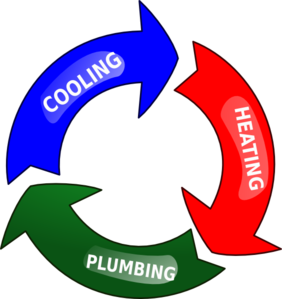History of air conditioning: We all love to live in a comfortable environment. However, everyday life in the hot summer is impossible without an air conditioner. Installing an air conditioner in your home or office can make your hot days more comfortable and productive. An air conditioner is an appliance that has become necessary for American homes, but the first air conditioner had anything to do with human comfort. So what was the purpose behind its initial invention, and who invented the modern air conditioner? Here we will talk about the history of modern air conditioning. Let’s get into it!
Who first invented the air conditioner?
Willis Haviland Carrier was an American engineer who invented the first A/C in 1902 to control the humidity and temperature of the printing plant of a Brooklyn-based printing company. This invention improved the manufacturing process by controlling the humidity around the printer. The Carrier used an industrial fan to circulate air across cold water-filled steam coils, causing the excess humidity to condense on the coils and generate cooled air.
Drawing inspiration from earlier mechanical refrigeration advancements, he designed a system that sent airflow through cold water-filled coils, effectively cooling the air and regulating humidity. That’s how the history of air conditioning started.
The initial invention couldn’t effectively control the humidity, and Carrier knew it. So he successfully created the Centrifugal Refrigeration Compressor in 1922, which was more potent and smaller than early models. This safer, more compact, and more powerful innovation was a precursor to modern air conditioning technology.
A Short and Cool History of Air Conditioners
18th century:
In the 18th century, scientists like Benjamin Franklin and John Hardly conducted experiments. They discovered that volatile liquids and alcohol could effectively lower the temperature of an object to the point of freezing water.
19th century
In 1820, scientists successfully made artificial ice for the first time. After four years, English inventor Michael Faraday came up with the idea of an absorption refrigerator and found that air cooled down when he compressed and liquidized ammonia and then allowed it to evaporate.
In 1831, an American inventor and mechanical engineer named Jacob Perkins invented the steam-powered refrigerator.
In the late 1830s, Dr. John Gorrie created an ice-making machine to cool down his malaria and yellow fever patients. This machine used compressed air and water to make buckets of ice. He used a fan to blow air over the buckets of ice. The design of this ice-making machine was somewhat similar to modern-day air conditioning.
20th century:
In 1902, a skilled American engineer named Willis Haviland Carrier designed the first air conditioner, the closest predecessor to the A/C unit we use today. He invented it to control the temperature and excessive humidity of the surroundings to solve the problem of blurry prints and swelling pages due to humidity. He used an industrial fan to blow air over coils filled with cold water, causing the excess moisture to condense on the steam coils, producing cooled air that allowed the printing plant to cool with a humidity rate of 55%.
In 1922, Carrier created a centrifugal compressor that was smaller in size than his early model. He also replaced the ammonia with a coolant dyeing and used a compressor to reduce the unit size, which replaced the rotary compressors.
1930: Air conditioning was in the White House.
In 1953, A/C companies installed one million air conditioning units in the USA.
Heat-pumped technology was developed in 1977, allowing heating and cooling using the same machine. That means it can provide heating during colder months and cooling in hot months.
A non-combustible gas named Freon, used in air conditioning as a refrigerant was banned in 1994 due to its link to ozone depletion. So the manufacturers switched to a less harmful refrigerant.
21st century:
Around 6.7 million A.C. systems were produced in 2002, which shows how keeping homes and offices cool became necessary.
In 2015, the U.S. Energy Department announced new projects focused on non-vapor compression technologies that eliminate the need for refrigerants.
In 2022, over 27 million homeowners in America had central air conditioning, and around 17 million had multiple A.C. units.
Modern air conditioning
The air conditioning system is a system to enhance industrial productivity. Described as a power luxury after its invention, it has become a necessity for U.S. households. The initial design was unconcerned with comfort, but today around 75% of U.S. homeowners have air conditioning.
Modern air conditioning systems let you control humidity levels, reduce power consumption, and enjoy consistent cool and high-quality air. The advancement of air conditioning technology continues to grow. That means you can expect more advanced versions of air conditioning systems in the coming years with the advances in modern technology. It will be intriguing to witness the extent of progress in air conditioning technology over the next decade.
Advancements and discoveries will continue to happen, and we at Inman SC Air Conditioning are here to help you resolve all your HVAC issues. Small A/C maintenance tasks like keeping debris away from the a/c unit and changing the filter help keep your A/C unit running smoothly. However, keeping your A/C system running efficiently and smoothly requires consistent and proper maintenance. A/C system maintenance helps you save money and prevent unexpected breakdowns that can leave you frustrated and sweaty.
History of Air Conditioning | Blog Article | Hannah’s Heating and Air | All Rights Reserved | Inman SC | May 2023
